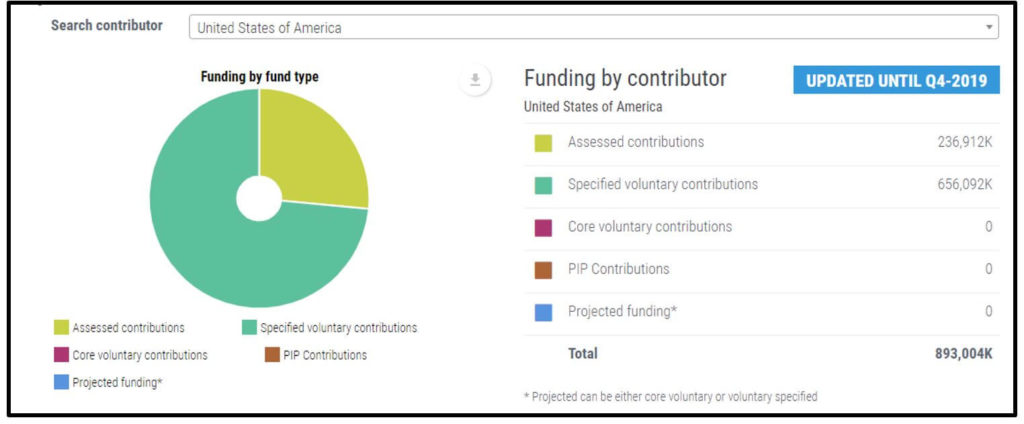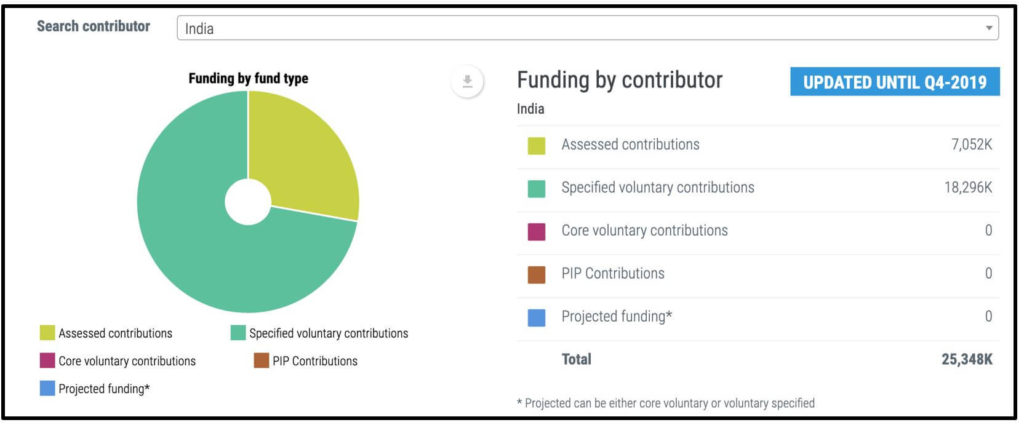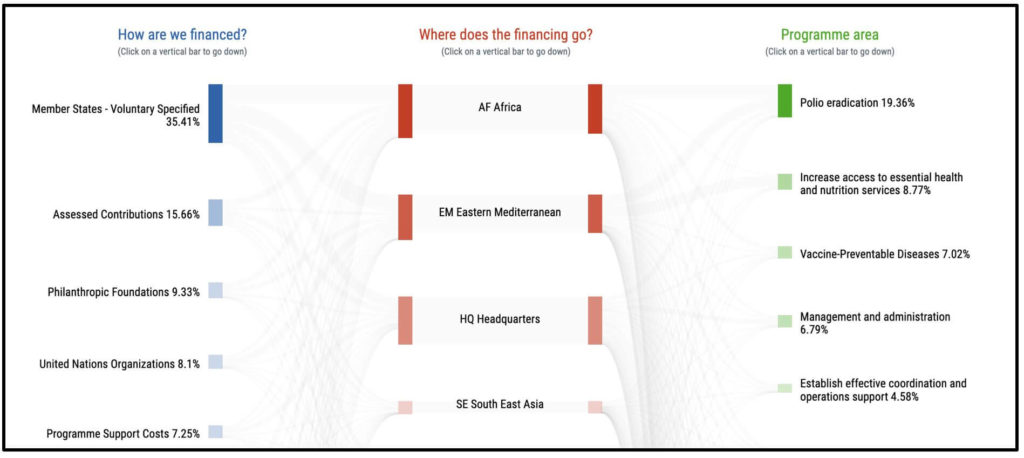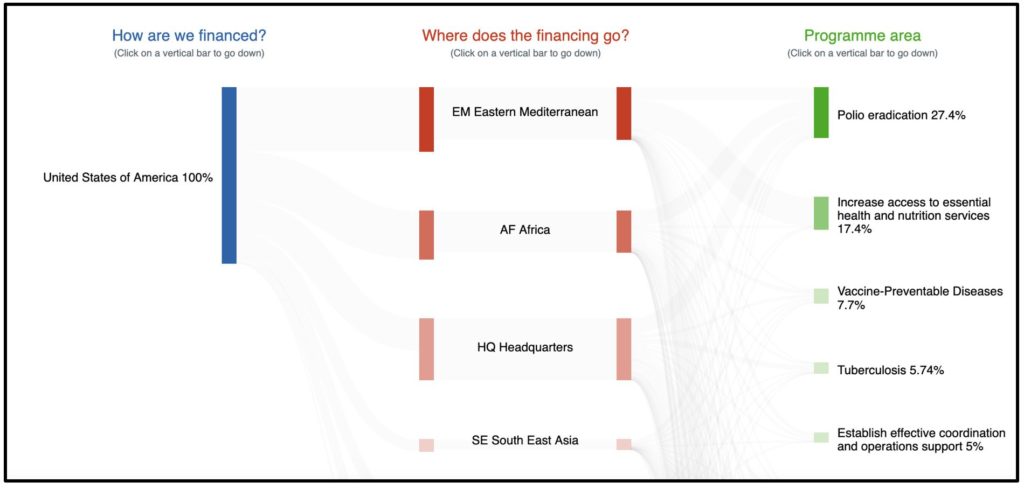After POTUS Donald Trump announced that USA is halting its funding to the WHO, there has been a lot of debate around WHO’s finances. So, who funds the WHO? What is the size of its budget? Here is a detailed explainer.
The World Health Organization (WHO) has been in the spotlight for the last few months following the outbreak of COVID-19. It is also being accused of acting in China’s interests above all.
Recently, US President Donald Trump, during one of his interactions with media, said that he has instructed his administration to halt the funding to WHO. He alleged that WHO was ‘mismanaging and covering up the spread of coronavirus’. The decision has been criticized by many as it has been taken at a time when the entire world is fighting a crisis.
How much does the US contribute to WHO? Where does WHO get its funds from? What are the implications if the USA suspends its funding? Here are the details.
WHO was founded in 1948 to monitor public health at global level
WHO is an agency of United Nations that was formed in 1948 to ‘direct and coordinate international health within United Nations system.’ In simpler terms, WHO plays a pivotal role in the governance of health and diseases, at a global level. Besides taking up a leadership role on global health, some major functions of WHO include research, monitoring and assessment of health trends and concerns, and formulation of policies. During public health emergencies, like the current one due to COVID-19, it is the WHO that takes a leadership role and provide guidance to countries on what all needs to be done and precautionary measures to be taken. Presently, there are 194 member states with which WHO works. WHO relies on contributions from these member countries and private organizations for its budget.
Assessed contributions and voluntary contributions are the sources of funding for WHO
To meet its budgetary expenses, WHO receives contributions falling in either of the two categories – assessed contributions and voluntary contributions.
Dues paid by countries to be a member of WHO are known as assessed contributions. The amount to be paid by each country is calculated based on its wealth and population.
Voluntary contributions are funds which are given by member states (in addition to their assessed contribution), private organizations, and even individuals. Just as the name suggests, these contributions are purely voluntary. Core voluntary contributions are those funds which are flexible and can be used to cover general expenses or low funded activities, thereby facilitating the easy implementation of programs. Specified voluntary contributions are those which are earmarked for ‘specified’ projects or activities.
Assessed contributions account for only 1/4th of program budget while voluntary contributions make up for remaining 3/4th
Over the years, assessed contributions have dwindled as a proportion of program budget. It accounts for only less than a quarter of WHO’s finances. Meanwhile, voluntary contributions account for the remaining 75% of WHO’s funding.
Advantage of assessed contributions over voluntary contributions is that it is flexible and has higher predictability since it is agreed with member states in advance. This helps in planning budget accordingly. Furthermore, it reduces dependence on donors.
Large chunk of contributions to WHO are specified voluntary contributions
As of the fourth quarter of 2019, WHO received a total contribution of US$ 5.62 billion comprising of assessed contributions of $956 million, specified voluntary contributions amounting to $4.38 billion, core voluntary contributions of $160 million, and PIP contributions worth $178 million, for the biennium 2018-19. In other words, the biennial budget of the WHO is around $5.62 billion an annual budget of around $ 2.8 billion. As is evident from the data, specified voluntary contributions make up for the larger chunk of contributions.

USA’s contribution amounts to $893 million including an assessed contribution of $236.9 million and specified voluntary contribution of $656 million as in the last quarter of 2019.

Similarly, India’s contribution amounts to $18.3 million specified voluntary contribution and $7 million assessed contributions, totalling to $25.3 million.

Pandemic Influenza Preparedness Framework was introduced in 2011
Since 2011, Pandemic Influenza Preparedness (PIP) Partnership Contribution was introduced in addition to the existing type of contributions. This contribution is made by influenza vaccine, diagnostic, and pharmaceutical manufacturers, who use Global Influenza Surveillance and Response System (GISRS). PIP funds are utilized for pandemic influenza preparedness capacity building, and response activities. WHO determines potential contributors every year taking into account their nature and capabilities.
Almost 16% of WHO’s funding is through USA’s contribution
Currently, USA’s contribution totals 15.88% of the total funding of WHO, thereby making it the biggest contributor of WHO. Apart from USA, top contributors contributing more than $200 million are Bill & Melinda Gates Foundation (9.4%), UK (7.7%), GAVI Vaccine Alliance (6.59%), Germany (5.19%), and Japan (3.8%). International bodies – UN Office for the Coordination of Humanitarian Affairs (3.41%), Rotary International (2.53%), World Bank (2.35%), and European Commission (2.33%) are also a part of the top ten contributors to WHO. India’s contribution amounts to around 0.45% while China’s accounts for 1.52%.

WHO allocated African region and eastern Mediterranean regions more than a billion dollars each
Of the total funds received, WHO has allocated about $1.64 billion to the African region. Another $1.38 billion has been allocated to Eastern Mediterranean, and $982million to the WHO Headquarters. South East Asia received $375.3 million while Europe received $328.1 million. Western Pacific is allotted $282 million and Americas received $62.2 million.
More than 19.4% of the funds received, about $998.8 million has been allocated for polio eradication. 8.8% of the funds have been allotted for improving access to essential health and nutritional services, followed by 7% to vaccine-preventable diseases. About 4.6% has been allocated for operations and coordination support and 4.4% for prevention and control of outbreaks.

The distribution of a country’s contribution in terms of what is it spent on is available only for specified voluntary contributions. For instance, in the case of the USA, $553 million of specified contribution is fully distributed. Out of this, 27.4% is used for Polio eradication, 5.74% for Tuberculosis etc.

Trump halted USA’s contribution to WHO alleging lack of transparency and slow response to pandemic
During his press conference on 14 April 2020, Donald Trump announced that he had asked his administration to halt funding to WHO until a review assessment is conducted. Trump also stated that WHO was mismanaging and covering up the spread of coronavirus. He also criticized WHO for its pandemic response and blamed the organization for the delay in declaring COVID-19 a public health emergency. WHO declared COVID-19 a Public Health Emergency of International Concern on 30 January 2020.
Trump pointed out WHO’s tweet on 14 January 2020, which stated that preliminary tests conducted by Chinese authorities found no clear evidence of human to human transmission of the virus.
He alleged that WHO lacked transparency and that WHO should have sent groups to study the ground reality in China when the disease had initially broken out. However, Trump has been spotted blaming China for the outbreak multiple times.
‘WHO regrets USA’s decision’ – Director general of WHO
WHO’s Director General, Tedros Adhanom Ghebreyesus, said during a press conference that they regretted the decision of US President to halt the funding. He added that WHO will be assessing how the programs will be affected by this decision and announce it officially.
The decision taken by USA has not been welcomed by many as it has come at a time when the world is hit by one of the worst epidemics in the last few decades. Bill Gates, founder of Bill and Melinda Gates Foundation tweeted that USA’s decision during a world health crisis is as ‘dangerous as it sounds’.
USA is the worst affected country till date
As on 23 April 2020, WHO dashboard reveals that more than 25.5 lakh cases of COVID-19 have been confirmed world-wide. The disease has claimed the lives of 1.75 lakh persons across the globe. Of this, more than 8 lakh confirmed cases are from USA, which also accounted for more than 40,000 deaths. USA has reported the greatest number of cases and deaths reported so far, even more than China and Italy, which are the early epicentres of the outbreak.


